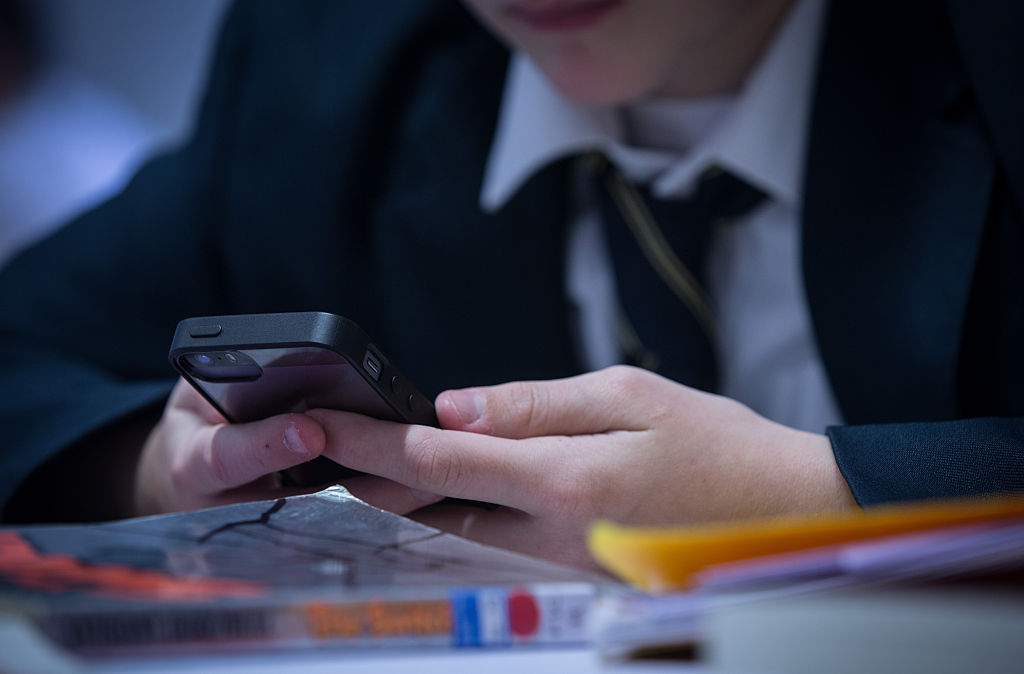US Schools Embrace No-Phone Policy for Distraction-Free, Mental Health-Focused Learning Experience
Schools across the United States have been adopting a no-phone policy as a way to promote a more focused and mentally healthy learning environment. This shift is driven concerns about the impact of smartphones on students’ mental health and academic performance, according to a CBS News report.
One example of this trend can be seen at Newburgh Free Academy in New York. Students at this public high school are required to lock their phones away in specially designed pouches that remain locked for the entire school day, including lunchtime.
When the policy was first introduced four years ago, there were mixed reactions among students. However, over time, many students, including senior Tyson Hill, have come to appreciate the benefits of a phone-free school. Hill admitted that coming from a school where phone bans weren’t enforced, he was constantly using his phone. But now, he sees the value in being free from that distraction.
Teachers at Newburgh have also noticed significant changes in student behavior. Students now walk with their heads up, engaging with one another, and the cafeteria is alive with conversation and laughter.
The rise of no-phone policies in schools aligns with growing concerns about children’s mental health and the role of technology in exacerbating these issues. Before the COVID-19 pandemic, the Centers for Disease Control and Prevention reported a 40% increase in feelings of persistent sadness, hopelessness, and suicidal thoughts among students. Test scores, especially in math for grades 4 and 8, also saw a significant decline.
Social psychologist and author Jonathan Haidt believes that smartphones, along with their social media and messaging apps, are at the root of this problem. He argues that phones have become constant sources of distraction, rather than just communication tools.
Phones in schools can also pose safety risks in emergency situations, as Ebony Clark, assistant principal at Newburgh Free Academy, pointed out. She explained that a ringing phone in an emergency can make students a target.
According to the National Center for Education Statistics, cellphone bans were in place in 76% of US schools in 2020. However, the extent of these bans varies, with some schools adopting more comprehensive policies than others. The decision to implement strict no-phone policies is driven concerns about student behavior and mental health.
While there is a need to strike a balance, with some experts cautioning against overly restrictive policies, the primary goal is to enhance student engagement in the classroom. Research shows that cell phones are a significant distraction, even when not in use.
The National Education Association states that some school leaders believe that a cellphone-free environment can lead to reduced incidents of cyberbullying, improved attendance, and decreased time spent on social media.
It’s important for schools to adopt flexible and consistent policies that find a balance between the benefits and drawbacks of cell phones in the classroom. Complete eradication of cell phones may not be realistic, but finding a middle ground will be crucial.
As the debate surrounding cell phone use in schools continues, Tech Times will keep you updated on the latest developments.

